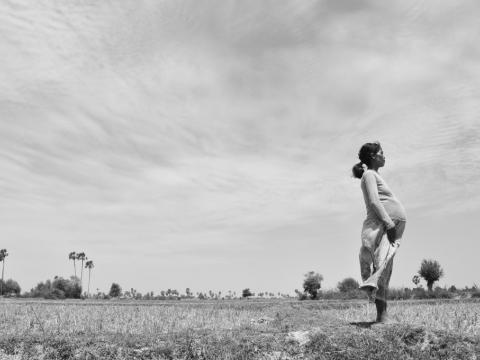Respectful maternal and newborn care: we need to do it better

By: Mary Dunbar, Maternal, Child Health and Nutrition Specialist; World Vision East Asia
What does every mother hope for when she thinks about the delivery of her baby?
It’s almost certain she wants to deliver her baby with a person she trusts, who is kind and has the skills to ensure her safety.
She wants to be treated with dignity and respect, and with due consideration of her culture and beliefs.
She hopes to be kept informed of her progress in labour and have a choice about what happens to her during her stay at the health facility.
Now let’s travel together on a long journey on a red, dusty pitted road that runs through ever-present parched rice fields.
This is the typical road that women travel on during the dry season to deliver their babies at the local health centre. In the wet season the road is impassable and the cost of travel may be considerably increased by the need to hire a boat to reach their destination.
Finally we arrive at the health centre, one typical of rural health centres in communities where World Vision works in East Asia.
The two or three health centre midwives have usually received one year training. Often, the midwives are young and inexperienced and come from outside the local area.
If the community is lucky the health centre will have at least one midwife who has completed a three-year secondary midwifery course. The midwives work in shifts over a 24-hour period and deliver up to 30 babies per month.
There has been an exponential increase in the midwives’ workload during the last few years. This is largely due to the very positive commitment on the part of governments to achieve the Millennium Development Goals (MDGs).
One of the MDGs’ priority targets is to reduce the maternal mortality ratio. A key indicator of progress is an increase in the number of women who deliver with a skilled birth attendant.
Through policy changes and incentives for midwives and mothers, good progress has been made in increasing the number of women who deliver their baby in a government health facility.
When the MDG achievements are evaluated this will likely be one of the achievements that will be celebrated.
Despite this success a current dilemma is that the great effort and resources required to renovate rural health centres and strengthen the quality of maternal and newborn services has been unable to keep up with the pace of the demand.
There is a huge gap between the basic minimum requirements for a safe and clean delivery and the reality.
Imagine that inside the health centre, the delivery room is gloomy and dank.
A thin wire line is strung above the sink and covered with used washed plastic gloves hung up to dry. There is also a large pair of plastic boots in the corner.
The centre piece of the room is an intimidating and dusty antique wooden delivery bed, with huge stiff wooden stirrups on either side.
The sink does not have running water. Water is very scarce during the dry season as it is pumped from a muddy pond and stored in a water jar in the room.
In this health centre the midwives report that women stay for 24 hours and then return home with their newborn baby on the back of a motorbike, or motorbike trailer.
Some health centres report that women only stay for a few hours after delivery due to the lack of facilities. Women explain they return home due the fear of ghosts in health centres that lack electricity.
It’s clear that we cannot ethically promote facility deliveries in health centres that fail to meet the basic minimum requirements for a safe and clean delivery.
Governments’ scant resources will likely take several more years to reach the most remote areas. In the meantime, organisations and citizens must continue to remind governments about the need. World Vision is making the case for more effort to be put toward gathering good statistics on things like births and healthcare so that governments can properly allocate resources and not inadvertently ignore public health crises.
In the meantime many women’s experience of labour and delivery will remain more of a scary horror story than a momentous fulfilling experience of celebration and joy.
One of the goals of the Global Week of Action (GWA), which has already seen the mobilisation of 3.5 million citizens around the world this month, is to urge leaders to reach the priority targets of the Millennium Development Goals 4 & 5 – to improve maternal health and reduce child mortality.
Promoting the vital role of midwives, and urging governments to increase funding to train and hire midwives and other community health workers are some of the calls being made around the world during the Global Week of Action this month. Learn more about the Global Week of Action and how you can get involved HERE.